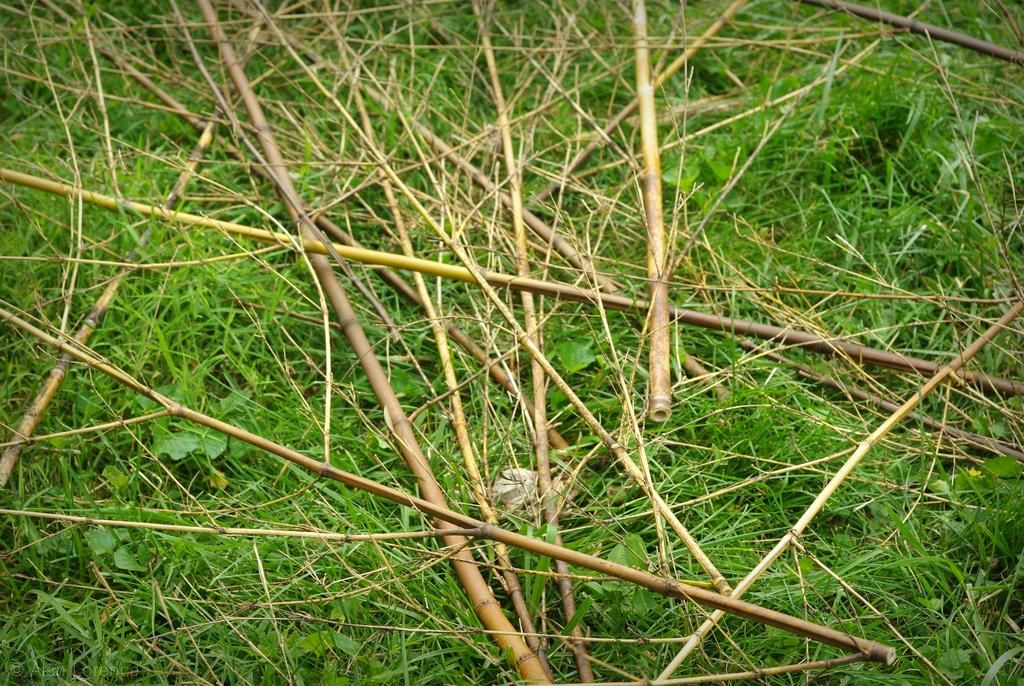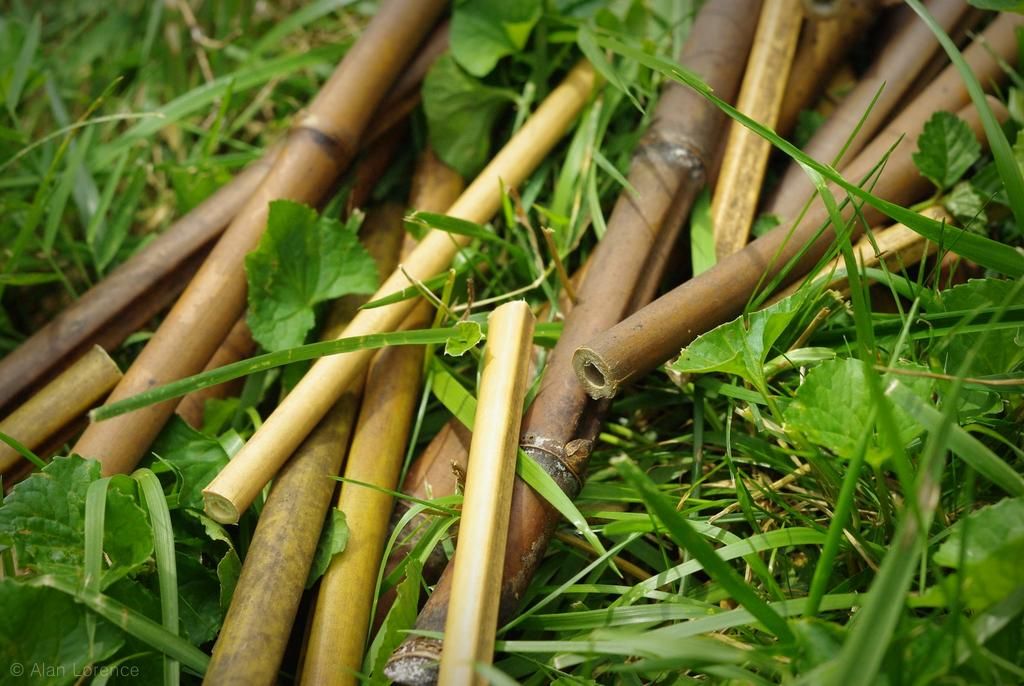That makes for a few dead culms that need to be removed. I've put this task off for a while, letting the dead culms provide support and protection for the newly emerging ones, but I finally decided it was time to start cleaning up a bit.
The first plant I started with was this Phyllostachys makinoi:
I didn't take a "before" photo, as I wasn't intending on writing a post about this. But once I had a small pile of dead culms...
...and realized what good, sturdy canes this species produces, I decided that I had to do something with them -- they couldn't go into the compost pile.
They're not big enough for anything really exciting, so I started cutting them up into pieces:
They're not big enough for anything really exciting, so I started cutting them up into pieces:
Once I had a respectable little pile, the ideas started flowing. Maybe a simple native mason bee "hotel"?
Hearing the little tubes clink together as I tossed a new one onto the pile though, I thought that some sort of wind chime might be possible too (my bamboo wind chimes use large culms for a deeper sound, but a smaller "tinkling" one would be nice).
I still have many culms to cut down, including the beautiful dark ones from my black bamboo, which should have decent wood too.
I'll have to start thinking of more ideas...
.






Very cool! Can't wait to see what you come up with!
ReplyDeleteI'll need to cut out some of the old culms in my groves too. One thing is that I have no idea if they are loaded with starch for the ones that leaf out half way up the culms on the hardier species that did not completely top kill. In any case, they do appear to be a hindrance to the new culms getting photosynthesis with all the dead branches.
ReplyDeleteI vote for bamboo flutes!
ReplyDeleteI love your blog-it's very informative, but I'm fascinated how creative you are! A bee "hotel"?!- I never would have thought about it!
ReplyDelete